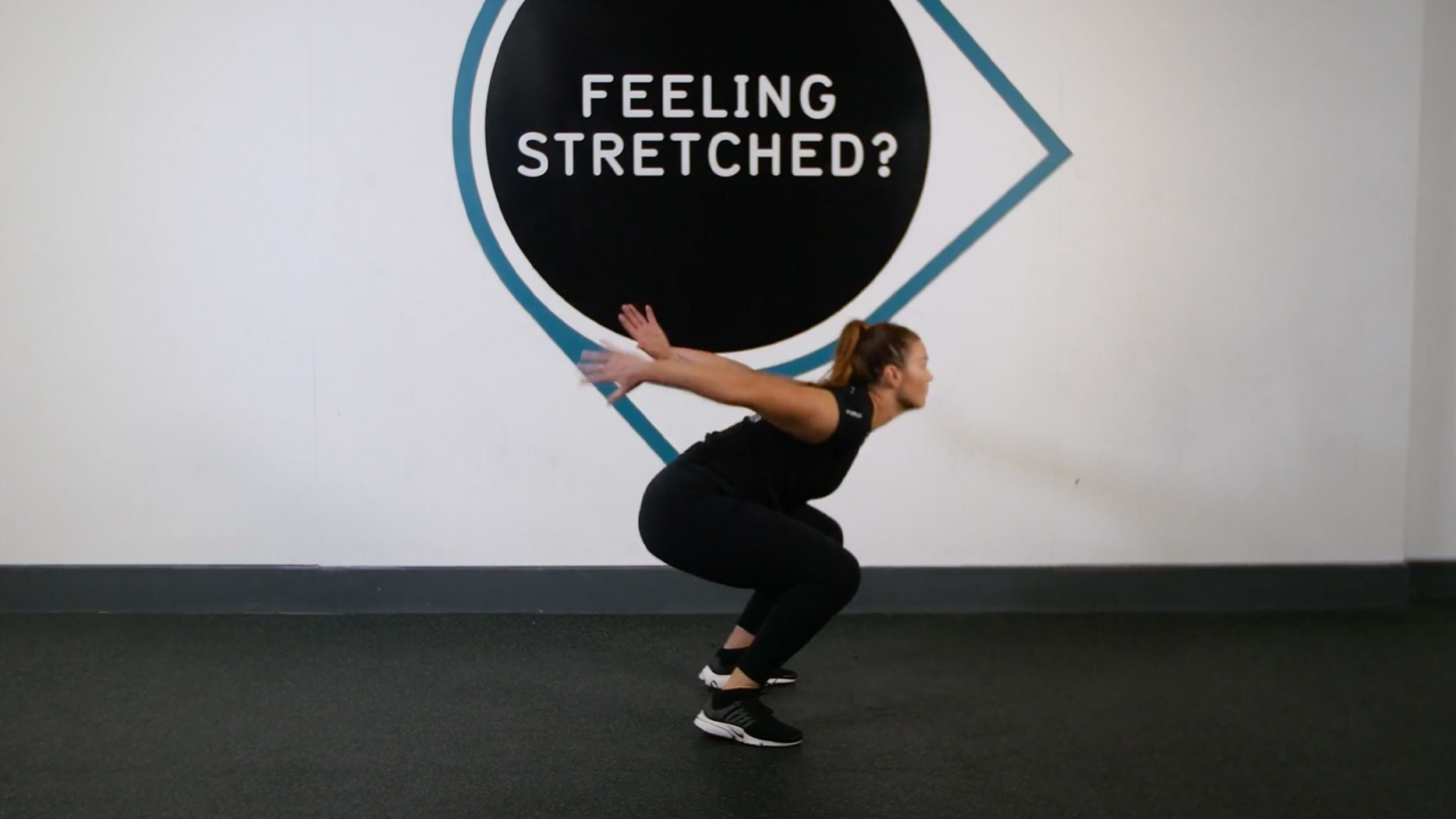Squat Jumps
What Is A Squat Jump?

Squat jumps are a dynamic movement that require you to use power and strength to launch yourself out of the bottom position of a squat and jump up into the air. This exercise requires a significant amount of energy and can build strength as well as power and speed, making it a great squat variation for anyone who wants to improve their athletic performance.
Squat jumps work well within strength workouts, HIIT sessions, or any kind of circuit workout to get the heart pumping. It's typically performed using just bodyweight but those who are advanced lifters or experienced in plyometric training can add in weights.
Squat jumps work the lower body muscles including the glutes, hamstrings, calves, and quads, as well as the core and upper body and arm muscles as these are used to generate the movement that facilitates a powerful jump. Plyometric exercises like the squat jump also work the cardiovascular system and can help with aerobic endurance.
Check out some other squat variations: broad jumps, bodyweight squats, barbell back squats, front squats, sumo squats
Commonly Asked Questions On Squat Jumps
Squat jumps can aid in building muscle, particularly in the glutes, hamstrings, calves, and quads. However, if you’re an experienced lifter who regularly trains legs, it’s unlikely you’ll notice significant muscle hypertrophy from squat jumps, especially bodyweight only. That said, squat jumps can help to build power and strength, which can translate to heavier loads on other squat variations, which could then build muscle.
Squat jumps are a helpful progression to bodyweight squats and a suitable regression from broad jumps. They can be used to build muscle, improve cardiovascular fitness, and increase lower body power and strength. They're also a great exercise for anyone looking to improve athletic and sports performance as a result of the power and strength built.
Building muscle with squats is likely to affect how high somebody can jump. The more muscle mass somebody has the greater power they are likely to generate, so gaining lower body strength through performing squats is likely to improve your jump height. Practicing squat jumps in particular works the muscles in explosive movements which can directly translate into more explosive jumps.
Squat Jump Tips
Squat jumps are high impact and place more pressure on the knee and hip joints than other squat variations. If you’re returning from an injury or are prone to knee and hip pain, we’d recommend working on bodyweight squat variations and adding in a pause or pulses to increase intensity instead.
If you’re new to squatting, work on mastering the bodyweight squat and goblet squat first. This will allow you to build some muscle mass which can protect the joints and allow you to perform squat jumps with strength and power.
How To Do Squat Jumps
Stand tall with your feet shoulder width apart. This foot positioning gives the most stability and power to jump from.
Engage your core and then squat down by pushing your hips back while bending at the knees, making sure to push the knees outwards to prevent them caving.
As you reach parallel with the floor, swing your arms behind you and then swing them forward to create momentum at the same time as pushing up through both feet to propel yourself up and off the floor.
As you start to descent, bend your knees so you can land in squat position.
You can either complete your next rep from this position or return to standing and repeat.
If you’re not sure if any of the above exercises are suitable for you, please consult your doctor before you start it. Need guidance on how to perform the exercise? Ask a personal trainer at your gym.